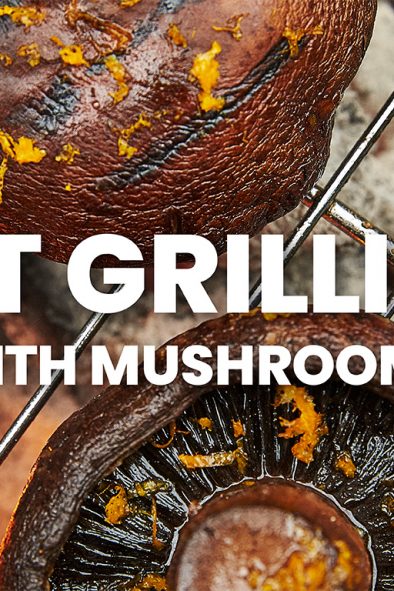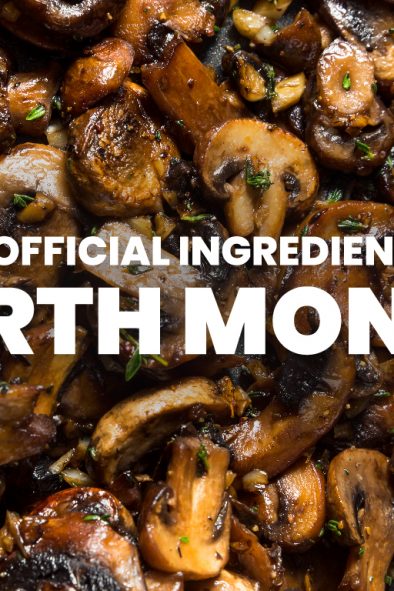Articles
How Mushrooms Fit Into Your Lifestyle

By guest author Cara Harbstreet, MS RD LD
Do you embrace a “New Year, New You” attitude, or do you adopt gradual changes over time? As a registered dietitian, I see lots of interest in new diets, lifestyle changes, and renewed energy around healthy eating at the beginning of each year. Instead of letting your resolutions fizzle out, I encourage you to think about how your eating style can serve your health all year long.
Fad diets and short-terms plans can be too restrictive for the long haul. Focus on flavor, satisfaction, and variety to build health-promoting habits with your meals.
When it comes to mushrooms, there’s ample opportunity to feature them in a wide variety of eating patterns! Let’s take a look at some of the most popular for 2022.
Vegan and Vegetarian Diets
I don’t consider vegan or vegetarian diets as a “trend” - they are definitely here to stay. In fact, many cultures and cuisines around the world followed a vegan or vegetarian way of eating long before interest surged in mainstream food culture.
Vegan diets exclude all animal-based foods, including meat, dairy products, and eggs. Depending on the person, vegan diets might also exclude honey and other products made from animals, such as leather. Vegetarian diets vary, but may include eggs, dairy products, or seafood/fish depending on a person’s individual preferences.
Thanks to their rich flavor and dense texture, portabella mushrooms make a great stand-in for recipes where you’d normally use meat. Try this Easy Portabella Burger, it’s a gateway to more delicious vegetarian and vegan options!
Flexitarian Lifestyles and Plant-Forward Eating
Not ready to go fully plant-based? This approach might be a good alternative for you if you enjoy vegan or vegetarian meals, but still want to enjoy animal-based protein on occasion.
There is no standard definition for “flexitarian” or “plant-forward” eating, but the general idea behind it is that you take a flexible approach. Here are a few examples you might test out:
- You cook mostly vegetarian/vegan meals at home but enjoy animal proteins when dining out.
- The majority of the ingredients you use are plant-based, but you still cook with butter, eggs, or dairy products.
- You still eat the same variety of animal proteins, but in smaller quantities and move them from the center of your plate to make vegetables, grains, or legumes the star of the show.
This is the perfect opportunity to utilize The Blend, which is a mixture of mushrooms and meat. There are benefits beyond using more plants, so check out the resources and recipes available from the Mushroom Council.
"Clean" Eating
The phrase “clean eating” has always ruffled my feathers a bit because it implies some food is “dirty”. As a dietitian, I see this showing up in people who struggle with orthorexia tendencies (an unhealthy obsession with healthy eating) or disordered eating, so I typically don’t use it to describe how to eat.
Most people interpret “clean” to mean “minimally processed”, foods that aren’t packaged, or foods with a short ingredient list. But similar to other ambiguous terms like “natural” or “healthy” the definition remains up for debate as it can mean something drastically different from person to person. There may be health benefits to eating more minimally processed, whole food ingredients like fruits, vegetables, beans/legumes, grains, and other nourishing foods. And as an ingredient that goes from farm to table in just a handful of steps, mushrooms fit the bill!
Low-Carb or Keto-Style Diets
Much of the interest in low-carb or keto-style diets is driven by weight loss goals. Although I want to emphasize that restrictive diets aren’t something I endorse or recommend, we can take a closer look at the nutrition profile of mushrooms.
Mushrooms are low in calories, yet provide a number of key nutrients like B vitamins, selenium, copper, potassium (6%), and vitamin D*. A one-cup serving of sliced mushrooms provides just 2.3 carbohydrates so they can be compliant with low-carb or keto-style meal plans. That same one-cup serving of uncooked mushrooms also provides about 0.7 grams of fiber, something that is also challenging to get enough of when you eliminate most other carbohydrates that contain fiber.
Gentle Nutrition and Intuitive Eating
Since I’ve emphasized how I don’t support dieting, you may be wondering what I recommend in its place. Enter: gentle nutrition and intuitive eating!
These approaches may also go by different names, such as a non-diet approach or anti-diet approach. They all fall under the umbrella of Health at Every Size (HAES™) which promotes health-promoting behaviors, weight-inclusive healthcare, and reducing weight stigma and anti-fat bias. This approach to eating focuses on reconnecting with appetite cues for hunger and fullness, prioritizing foods that are both filling and satisfying, and using the intuitive eating principle of Gentle Nutrition to meet one’s individual energy and nutrition needs.
With the focus placed on satisfaction and taste preferences, there is opportunity to incorporate some aspects of mindful eating. For example, if you realize you don’t enjoy raw mushrooms on your salads or sandwiches, but really like the more savory flavors when roasted or grilled, you can better respond to your cravings and taste preferences in a way that supports health without resorting to restrictive dieting. As more people disengage from the “on-a-diet, off-a-diet” roller coaster, you can expect this approach to become more common. In fact, you may already be familiar!
No matter how you prefer to eat, I always recommend following your taste buds if your aim is something sustainable. Food should be enjoyed and eating should not be a source of added stress or anxiety. With such a wide variety of cultivated mushrooms available, you can be sure to find something that pleases your palate and helps you reach whatever health goals and values are most important to you.
*White button mushrooms contain 1 percent of vitamin D and 118% of the daily value when exposed to UV lighting.






Comments (1)
Love all types of mushrooms
Please send me all info for cooking and picking mushrooms